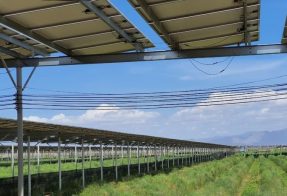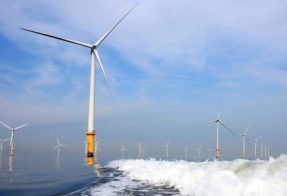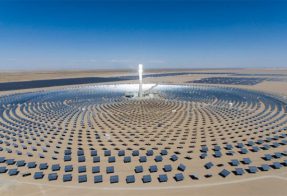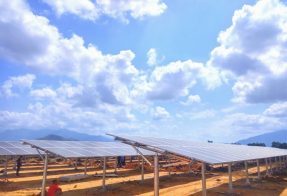Proposal to increase offshore wind power capacity to 15-20 GW by 2030
The Vietnam Energy Association proposes to increase the capacity to 15,000-20,000 MW by 2030, about 7 times the level stated in the draft power plan VIII.
This proposal was stated by the Vietnam Energy Association (VEA) in a document sent to the Government, ministries and branches on the development of the electricity industry to 2030, with a vision to 2050.
Compared with the capacity level given in the draft power plan VIII, the offshore wind power development capacity by 2030 is about 2,000-3,000 MW (equivalent to 2-3 GW). Thus, VEA proposed to increase the development capacity for offshore wind power to about 7 times compared to the draft power plan VIII.
Explaining this recommendation, according to VEA President Tran Viet Ngai, offshore wind power has many advantages, such as high wind speed of over 10 m per second, year-round wind volume of 5,000 hours or more. Offshore wind power projects can install large turbines with a capacity of over 10 MW and generate electricity up to billions of kWh per year. Currently, the world is also focusing on developing this type of energy.
In addition to the production advantage, according to VEA, along with technology, the price of offshore wind power projects will gradually decrease, from 7.69 cents per kWh in 2020 to 6.94 cents in 2030 and down to 5.82 cents per kWh by 2050.
“If Vietnam successfully invests in an offshore wind power project, many valuable lessons will be learned,” said Mr. Ngai.
The proposal to increase offshore wind power capacity in the draft power plan VIII has been mentioned by many international organizations. The Global Wind Energy Council (GWEC) recommends that Vietnam increase its offshore wind capacity to 10 GW by 2030, in order to take advantage of the available potential. On the other hand, only large-scale projects are attractive enough to attract investors to develop offshore wind power projects in Vietnam.
At an online meeting last week, Ms. Liming Quiao – Regional Director of the Global Wind Energy Council (GWEC) analyzed that the strength of offshore wind power is its high efficiency, about 29-52%, twice that of electricity. solar, higher than onshore wind and equivalent to gas.
Along with new technology, according to Ms. Liming Quiao, the efficiency of offshore wind power increases by 2.5% per year, so this type of energy can run the background load with a fairly stable source, the demand for electricity regulation. compensation for power changes is very low.
Offshore wind power investment rate is decreasing with modern technology, but Ms. Liming Quiao noted, offshore wind power production price will only decrease when the market reaches a certain installed capacity. “Vietnam should take advantage of the opportunity to develop offshore wind as quickly as possible so that it can achieve its goal of reducing electricity production costs,” said GWEC Asia Regional Director.
Regarding the development of primary power sources, the Vietnam Energy Association noted that in the coming time, balancing sources and output should take the main source of electricity as the source. Renewable energy prioritizes offshore wind power development, while onshore wind power and solar power need to be considered at a reasonable rate by 2030.
In particular, onshore wind and solar power projects need to be reasonably distributed by area, in balance with current capacity, to avoid overloading the grid when focusing on a few areas.
Management agencies also need to set standards for the quality of solar panels, at least 25-30 years old, to avoid poor quality panels, short lifespan, harmful to the environment when billions of panels the sun is released.
By the end of April, there were about 9,200 MW of farm solar power, 9,583 MW of rooftop solar power and 612 MW of wind power in operation. It is expected that the number of wind power projects put into operation will increase rapidly from now until the end of the year, with a capacity of about 4,500-5,400 MW.






